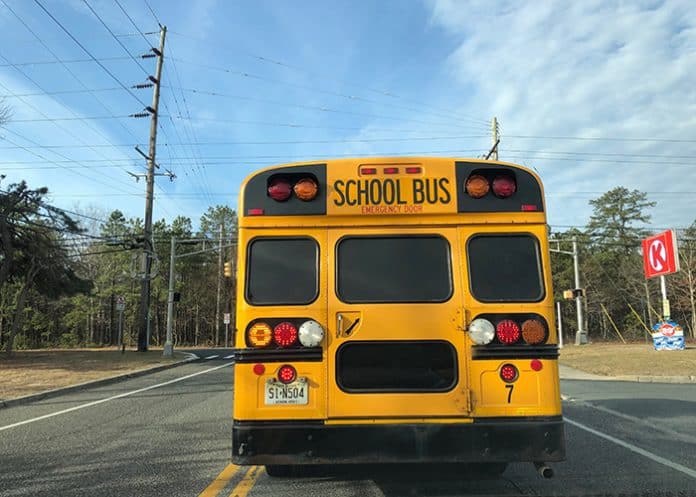
TOMS RIVER – District officials have been looking into ways to change school funding for a number of years, and a few new options are on the table.
The state has several laws that control how public schools can raise money. The biggest problem right now is commonly referred to as S-2, a law which took state aid away from districts like Toms River while fueling districts in other areas.
The district had been anticipating a loss of aid in the amount of $2,688,937. Instead, it was cut by $14,421,851. The aid for the upcoming school year will be $30,978,802. This is about a 33% reduction.
District officials have said that according to figures, Toms River is one of the lowest in the state for how much they spend per student based on their demographics.
Anna Polozzo, who represents South Toms River on the Board of Education, asked for support during a recent board meeting in asking the New Jersey School Boards Association to advocate for two changes.
One is that if there’s a referendum in November, that the results could be for the following school year.
As it stands now, a referendum in, for example, November of 2023 would impact the 2023-2024 school year. This makes it very difficult for officials to make plans since the school year is already underway.
The request would be that a referendum in November of 2023 could impact the 2024-2025 school year.
Superintendent Michael Citta and Business Administrator William Doering spoke in favor of this change. The board unanimously approved the resolution. This means that the board sent an endorsement to the School Boards Association to advocate for this change in Trenton.
Another rule that was discussed would allow a district to raise the tax cap more than 2 percent if they lost state aid.
The majority of districts would have to vote for the SBA to put this item in its package for advocacy, Polozzo said.
“It’s an option and another tool in the tool box,” Doering said.
Board members Polozzo, Jennifer Howe, Kathleen Eagan, Melissa Morrison and Michele Williams voted for it.
Board members Lisa Contessa, Ashley Lamb, and Kevin Kidney voted against it.
Board member Joseph Nardini was not present.
The motion passed, which meant that Toms River endorsed the School Boards Association to fight for that change. It doesn’t mean that the change would happen right away, or even this year if successful.
Political Pinch
School districts have to follow the laws written in Trenton and Washington, D.C. What happens in those two cities impacts what happens here, and towns like Toms River are often caught between the pincers. S-2 was crafted by state leaders and signed into law by the governor.
In August, the district said that aid had been reduced by $22.9 million (cumulative loss of $59.5 million) since 2018-2019. As of that date, there had been 276 positions cut in the district, 232 of which were teachers. Of those, 90 were reinstated by the American Rescue Plan funds. The two Senate members for New Jersey, Cory Booker and Bob Menendez, voted for the ARP. At the time that the ARP was up for vote, Congressman Andy Kim represented Toms River and he voted for it. But now, the two House members who represent Ocean County are Chris Smith and Jefferson Van Drew. They both voted against the ARP.
Years ago, former Gov. Chris Christie had pushed legislation that prevented school districts from raising taxes more than 2 percent. This gave districts a bargaining chip by telling employees that they legally can’t afford raises more than 2 percent. However, it ignored the fact that fuel, insurance, legal costs, pension payments and maintenance costs don’t have any 2 percent restriction.
The result is that Christie made it so that districts can’t raise taxes more than 2 percent. And if costs increased more than 2 percent, districts had to cut staff, sell property, or go without maintaining buildings in order to make schools run.
This is coupled with Senator Shirley K. Turner’s state law from years ago that moved school board elections to November and made it that districts don’t have to put their budgets up for public vote if they are within the cap.
Petition For Change
Anthony Trump, who ran unsuccessfully for the Pine Beach seat on the Board in 2019, started a petition asking for a referendum vote for municipalities in the Toms River Regional School District to increase taxes beyond the 2 percent cap “in order to balance the budget and make up for the state aid deficit.”
“This deficit has resulted in a significant reduction in funding for our schools, which has had a negative impact on our students, teachers, and community,” he wrote. “We believe that it is time to take action to address this issue and ensure that our schools have the resources they need to provide our children with a high quality education. We understand that increasing taxes beyond the 2% cap is a difficult decision, but we believe that it is necessary to maintain the quality of education in Toms River.”
The petition can be found by visiting Change.org and searching for “Toms River Schools.”
Stabilization Aid
When the state took millions of dollars away from school districts, there was of course a great uproar from many of them. The state then allowed districts to jump through some hoops in order to get money to fill the hole that the state had created.
Toms River received a Stabilization Aid award of 7,641,573 for the 2021-22 school year.
For the 2022-2023 school year (which we are currently in), they requested stabilization aid in the amount of $5,236,128. They received nothing, Doering confirmed.
After the governor’s most recent announcement on state aid, he suggested allotting $20 million to be divided among districts that are facing severe financial impact. However, that would be split between all districts across the state that apply for it. Ocean County districts lost $26,052,901 in total.







